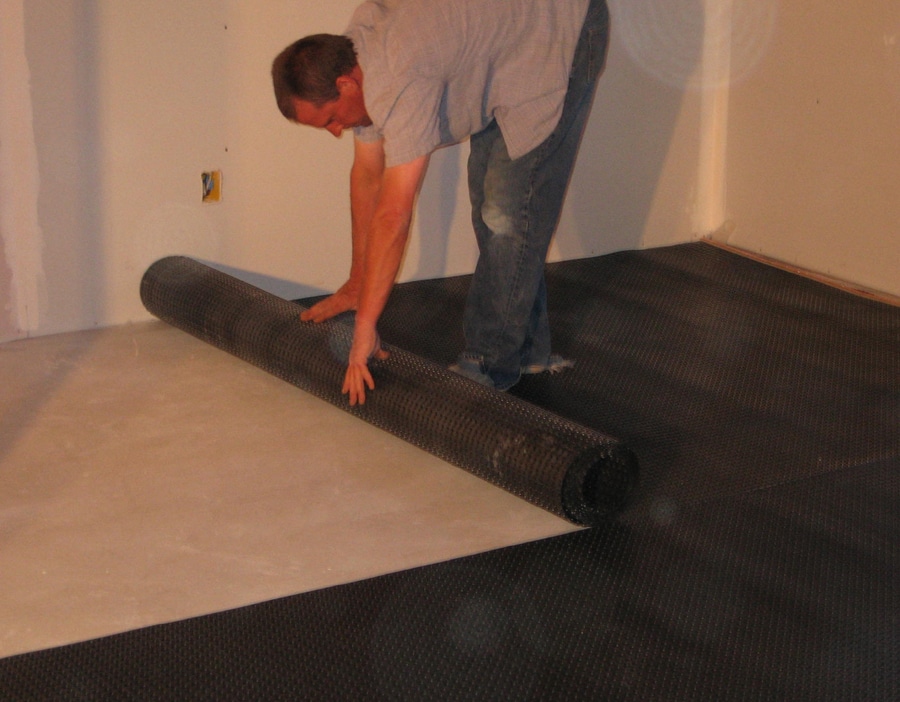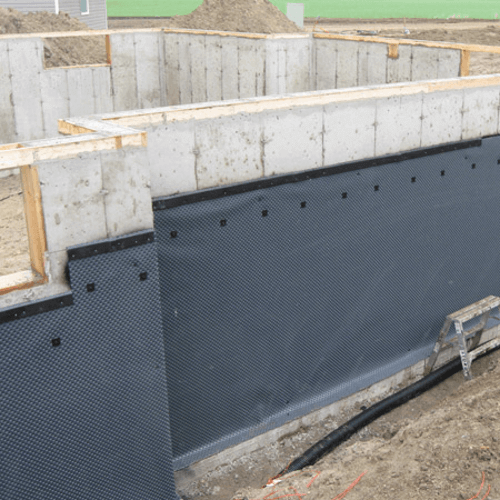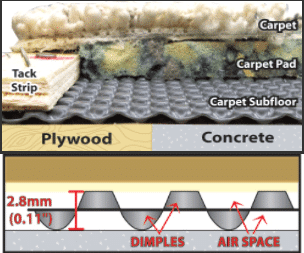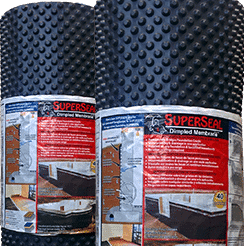Transforming your basement into a functional and inviting space often involves considering the right flooring options. Regarding basement floors, moisture control and protection are key factors to remember. One innovative solution that offers protection and durability is dimple board flooring. In this article, we will explore the benefits of using dimple board flooring for your basement, the installation process, and how it enhances the overall performance of your basement floor.
Introduction to Dimple Board Flooring
Dimple board flooring, or dimpled membrane or dimple mat, is a unique type of flooring designed specifically for basement environments. It consists of a durable plastic membrane with raised dimples or studs on one side and a flat surface on the other. This configuration allows for effective moisture control and protection, making it an ideal choice for basements prone to dampness or water intrusion.
The Importance of Basement Floor Protection and Moisture Control
Basements are notorious for their susceptibility to moisture-related issues. Factors such as high humidity, water seepage, or potential flooding can significantly impact the integrity of the basement floor. Without proper protection and moisture control measures, you may face problems like mold growth, mildew, and even structural damage. Investing in a reliable basement flooring solution, such as dimple board flooring, can help mitigate these risks and provide a long-lasting solution for your space.
Understanding the Benefits of Dimple Board Flooring
Dimple board flooring offers a range of benefits that make it an excellent choice for basement floors:
- Moisture control: The raised dimples on the membrane create an airspace between the floor and the finished surface, allowing for proper moisture ventilation and preventing water buildup.
- Protection against water intrusion: The impermeable nature of the plastic membrane acts as a barrier, protecting the underlying materials from water seepage or potential flooding.
- Enhanced durability: Dimple board flooring is designed to withstand heavy loads and resist damage, providing a durable surface for your basement floor.
- Thermal and sound insulation: The air gap created by the dimples provides a layer of insulation, helping to regulate temperature and reduce noise transmission.
Steps to Installing Dimple Board in Your Basement
Installing dimple board flooring in your basement follows a straightforward process:
- Prepare the basement floor: Ensure the floor is clean, dry, and debris-free. Repair any existing cracks or unevenness.
- Lay the dimple board: Roll out the dimple board membrane across the entire basement floor, overlapping the edges and securing them with adhesive or mechanical fasteners.
- Cut and trim: Use a utility knife or scissors to cut the dimple board to fit around the basement’s obstacles, corners, or protrusions.
- Seam and tape: Seal the seams between the dimple board sections using a compatible tape or sealant. This helps create a continuous barrier against moisture.
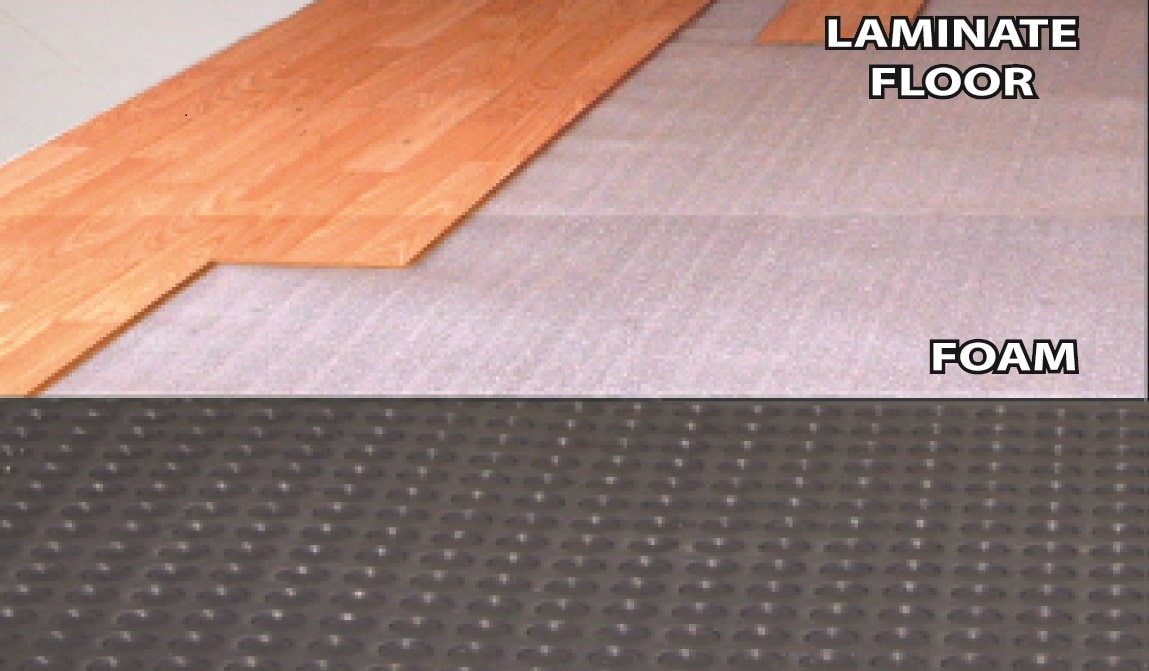
How Dimple Board Flooring Works
Dimple board flooring functions by creating a protective layer that effectively manages moisture. The raised dimples on the membrane elevate the finished surface, preventing direct contact with the concrete floor. This design allows any moisture or water entering the basement to flow freely beneath the dimple board, avoiding damage to the flooring materials above. The air gap created by the dimples also helps mitigate the effects of potential condensation and humidity.
Tips for Long-lasting Performance
To ensure the long-term performance of your dimple board basement floor, here are some maintenance tips to keep in mind:
- Regular inspections: Periodically check the dimple board flooring for any signs of damage or wear. Address any issues promptly to prevent moisture infiltration.
- Clean spills promptly: In the event of spills or water incidents, clean and dry the area promptly to minimize the potential for moisture-related problems.
- Proper ventilation: Ensure your basement is adequately ventilated to control humidity levels and prevent excessive moisture buildup.
- Follow manufacturer guidelines: Adhere to the manufacturer’s instructions for any specific care or maintenance recommendations for your dimple board flooring.
Dimple board flooring is a reliable and effective solution for protecting and enhancing your basement floor. Its moisture control capabilities and durable construction offer peace of mind and long-lasting performance. By installing dimple board flooring, you can transform your basement into a functional and comfortable space resistant to moisture-related issues. Elevate your basement’s performance and durability with the innovative solution of dimple board flooring.
Dimpled Waterproof Foundation Membrane Specialists SUPERSEAL
DRY-UP Dimple Board (4″ to 95″ wide rolls @ 65u0027 long)
Using a Dimple Mat to Keep a Basement Wall Dry – GreenBuildingAdvisor
Laminate, Carpet u0026 Engineered Wood Double Dimple Subfloor
Detailing a Slab in a Hot-Humid Climate – GreenBuildingAdvisor
Platon Plastic Sub-Floor for Concrete
To seal the basement slab, start with a layer of dimpled Delta
Dorken DELTA-FL Plastic Subfloor System for Basements
Dimpled Waterproof Membrane for Residential Interior Applications
Interior Drainage Poured u0026 Block Concrete Waterproofing
Dimple mats on subfloor instead of Dri-core? Cheaper? Waterproof
Dimpled Waterproof Foundation Membrane Specialists SUPERSEAL
Related Posts:
- Basement Floor Color Ideas
- Rubber Flooring For Basement
- How To Clear A Basement Floor Drain
- Basement Floor Covering Ideas
- Acid Wash Basement Floor
- Best Flooring For Concrete Basement Floor
- Insulation Under Basement Floor
- Stone Basement Floor
- Basement Floor Leveling Options
- Basement Flooring Options Inexpensive
Introduction to Dimple Board Basement Floor
When it comes to basement flooring, dimple board is an increasingly popular option. Dimple board is easy to install and provides excellent insulation and durability. It also has a low cost compared to other basement flooring options, making it an attractive choice for many homeowners. In this article, we will discuss the advantages of installing dimple board basement flooring, the materials required, and the installation process. We will also provide answers to some frequently asked questions about dimple board basement flooring.
What is Dimple Board Basement Floor?
Dimple board is a type of polyethylene or polypropylene foam plastic sheeting that is used as a protective membrane between the subfloor and the finished floor of a basement. It consists of two layers: a dimpled layer that acts as a moisture barrier and a smooth top layer that serves as a water vapor retarder. The dimples in the sheeting create air pockets that allow moisture to escape while still keeping the subfloor dry. The top layer helps keep any water vapor that does manage to get through from entering the subfloor and causing damage. Dimple board basement flooring is popular because it is easy to install, cost-effective, and provides superior insulation and durability.
Benefits of Installing Dimple Board Basement Floor
There are several advantages to installing dimple board basement flooring. First, it is relatively easy to install compared to other types of basement flooring. All you need is a utility knife, some adhesive caulk, and some screws or nails. It also costs less than other basement flooring options, making it a great choice for budget-conscious homeowners. In addition, dimple board provides superior insulation compared to other basement flooring materials. This helps keep your home warm in winter and cool in summer. Finally, dimpled board is highly durable and can withstand heavy foot traffic without showing signs of wear or tear.
Materials Required for Installing Dimple Board Basement Floor
When installing dimple board basement flooring, you will need a few basic materials. These include a utility knife, adhesive caulk, foam sealant tape, screws or nails, and dimpled board sheeting. You may also need an adhesive resin if your subfloor is not flat or level. If you are unsure of what type of adhesive caulk or sealant tape to use, consult with your local hardware store for advice on which products are best suited for your particular application.
Installation Process for Dimple Board Basement Floor
Installing dimpled board basement flooring is relatively straightforward but should still be done carefully for best results. Start by measuring the area where you want to install the flooring and then cut the dimpled board sheeting accordingly with a utility knife. Once the sheeting has been cut to size, apply adhesive caulk along the edges and corners of the subfloor to secure it in place. Then apply a foam sealant tape along the outside edges of the sheeting to seal any gaps or holes in the subfloor before nailing or screwing it down into place. Allow at least 24 hours for the adhesive caulk and sealant tape to dry before walking on the newly installed dimpled board basement floor.
FAQs about Dimple Board Basement Floor
Q: How long does dimpled board basement flooring last?
A: Dimpled board basement flooring can last up to 20 years when properly installed and maintained. However, its lifespan may be shortened if not cared for properly or if there is excessive moisture present in the area where it has been installed.
Q: Is dimpled board basement flooring waterproof?
A: No, dimpled board basement flooring is not waterproof but it does have excellent moisture resistance properties which help keep moisture away from your subfloor and prevent water damage from occurring over time.
Q: Does dimpled board basement flooring provide good insulation?
A: Yes, dimpled board provides excellent insulation due to its air pockets that help keep your home warm in winter and cool in summer. This makes it an ideal choice for basements with poor natural insulation such as concrete floors or walls made out of brick or stone.
